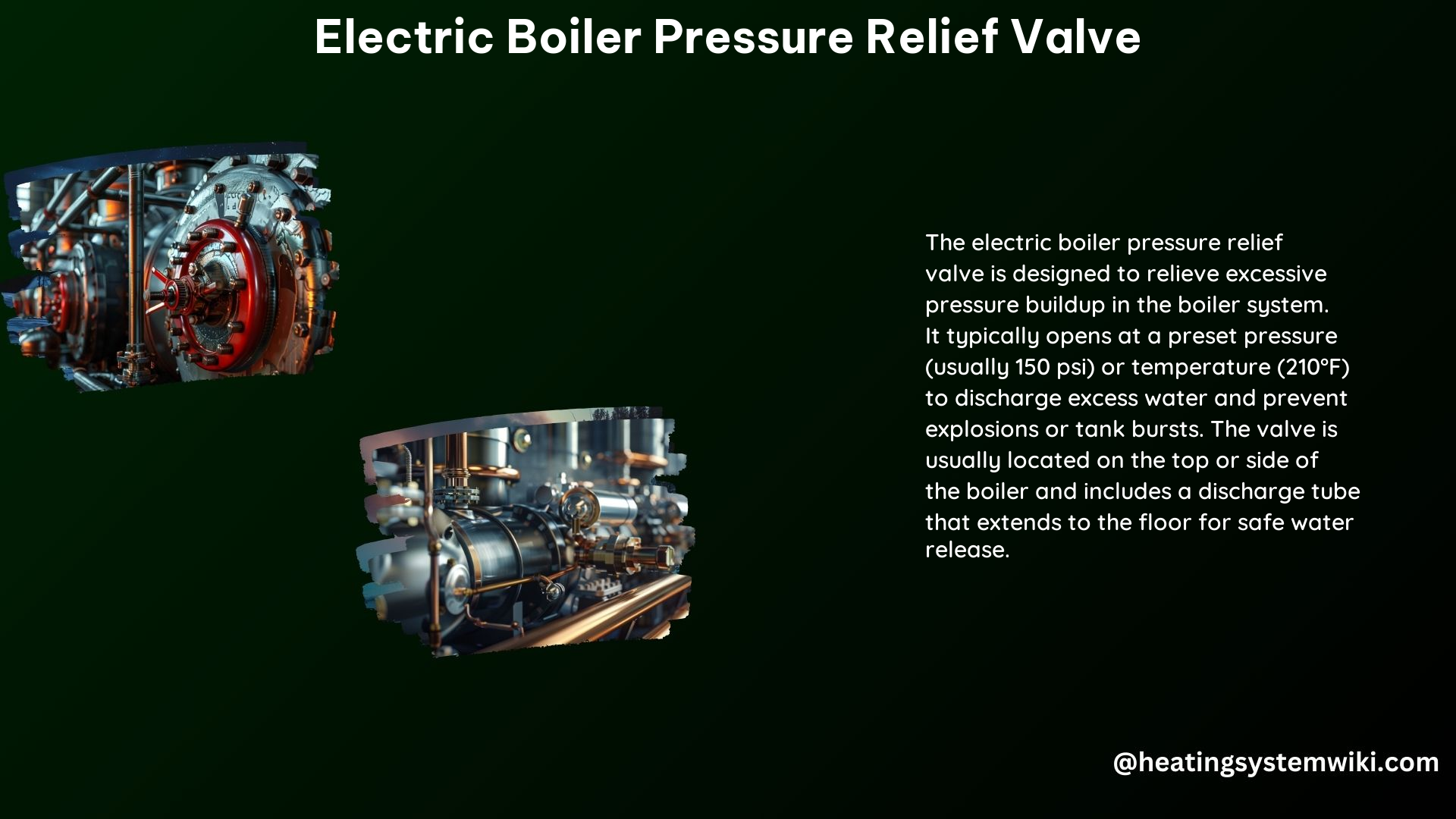An electric boiler pressure relief valve is a critical safety component designed to prevent excessive pressure buildup in electric boilers. This valve ensures that the boiler operates within safe pressure and temperature limits, safeguarding against potential explosions or damage.
How Does an Electric Boiler Pressure Relief Valve Work?
Role and Function
- The pressure relief valve opens to discharge excess water and release pressure when the internal pressure exceeds the preset limit, typically around 150 psi (10.3 bar).
- The valve also opens when the temperature inside the boiler goes above 210°F (99°C).
- This action prevents the boiler from overheating and reduces the risk of explosions or damage.
Location
- The pressure relief valve is typically located on the top or side of the boiler tank.
- The valve includes a discharge tube that extends about six inches above the floor to safely release water in case the valve is triggered.
Operation
- The valve opens when the pressure inside the tank exceeds the preset limit or the temperature goes above the safe threshold.
- This allows excess heated water to flow out, lowering the internal pressure and temperature.
Why Does an Electric Boiler Pressure Relief Valve Leak?

High Pressure
- If the boiler pressure exceeds the valve’s set point, usually around 30 psi (2.1 bar), the valve will open and release water to reduce the pressure.
Malfunctioning Components
- Issues with the auto-fill valve, expansion tanks, or other components can cause the pressure relief valve to leak.
How Often Should an Electric Boiler Pressure Relief Valve Be Tested?
Regular Testing
- It is recommended to test the pressure relief valve every six months to ensure it is functioning properly.
Testing Procedure
- Position a large bucket under the valve, remove the drain pipe, and gently lift the valve switch to release hot water.
- If water and air come out, the valve is working correctly.
Technical Specifications of Electric Boiler Pressure Relief Valves
Pressure Settings
- Typically set to open at 150 psi (10.3 bar) or 30 psi (2.1 bar) depending on the boiler type and application.
Temperature Settings
- Designed to open at temperatures above 210°F (99°C) to prevent overheating.
Materials and Construction
- Valves are usually made from durable materials such as brass or stainless steel to withstand high temperatures and pressures.
- The valve body is often made of brass, while the internal components, such as the spring and diaphragm, may be made of stainless steel or other corrosion-resistant materials.
- The valve seat is typically made of a heat-resistant and durable material, such as PTFE (Teflon) or a high-temperature rubber compound, to ensure a tight seal and prevent leaks.
References
- King Heating. (n.d.). What is the Water Heater Pressure-Relief Valve and What Does It Do? Retrieved from https://www.kingheating.com/blog/what-is-the-water-heater-pressure-relief-valve
- DoItYourself.com. (2022). Water leaking from pressure relief valve – need help. Retrieved from https://www.doityourself.com/forum/boilers-home-heating-steam-hot-water-systems/635408-water-leaking-pressure-relief-valve-need-help.html
- Plumberparts. (2019). PRV’s How do Pressure Relief Valves work? Altecnic PRV – YouTube. Retrieved from https://www.youtube.com/watch?v=uWg_lySYjU8
